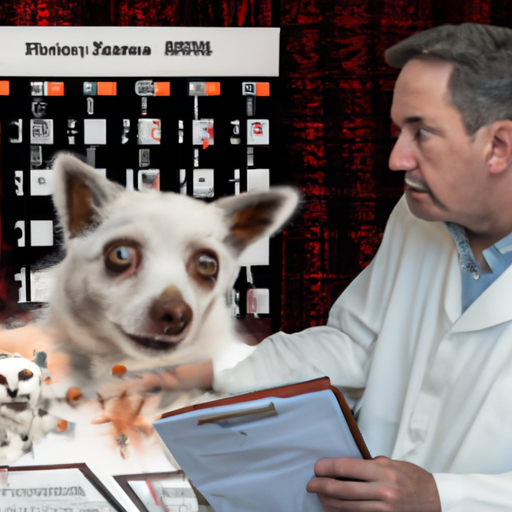As a dog owner or caregiver, it’s essential to understand the risks and dangers that diseases like rabies pose to your beloved pet. Rabies is a deadly disease caused by a virus that affects the central nervous system, leading to brain disease and eventually death. The question that plagues most pet parents is: how long does it take for rabies to show in dogs?
Table of Contents
1. Understanding Rabies in Dogs
2. Incubation Period for Rabies in Dogs
3. Recognizing Rabies Symptoms in Dogs
4. Preventing Rabies in Dogs
5. Frequently Asked Questions
Key Takeaways
* Rabies is a deadly disease that affects the central nervous system of dogs.
* The incubation period for rabies in dogs can range between 2 weeks to several months.
* Early rabies symptoms can be subtle, but the disease progresses rapidly once clinical signs appear.
* Vaccination is the most effective way to prevent rabies in dogs.
Understanding Rabies in Dogs
Rabies is a zoonotic virus, meaning it can be transmitted from animals to humans. The virus is usually transmitted through the saliva of an infected animal, typically via a bite. Once inside the body, the virus travels through the nerves to the brain. It’s crucial to understand this disease to ensure the safety of your pet and your family.
The American Veterinary Medical Association provides an in-depth look into the nature of rabies, its transmission, and the risks it poses to pets and humans alike.
Incubation Period for Rabies in Dogs
The incubation period—the time between exposure to the virus and the first onset of symptoms—varies widely in dogs. It can be as short as two weeks or as long as several months. In rare cases, the incubation period can extend to a year. The site of the bite, the severity, and the amount of virus introduced all influence this timeline.
For more information on the rabies incubation period in dogs, check out this comprehensive article on OneTopDog.
Recognizing Rabies Symptoms in Dogs
Recognizing the symptoms of rabies in dogs is crucial for early detection. Initially, your dog may show subtle changes in behavior such as restlessness or apprehension. As the disease progresses, these symptoms can escalate to aggression, lack of coordination, paralysis, and even seizures.
Here’s a detailed breakdown of the stages of rabies:
- Prodromal Stage: This is the first stage, lasting 2-3 days. Symptoms include fever, behavioral changes like nervousness, anxiety, and withdrawal.
- Excitative Stage: Also known as the ‘furious’ stage, it lasts 1-7 days. Dogs may become aggressive, irritable, and hypersensitive to stimuli. Biting, snapping, and frothing at the mouth are common.
- Paralytic Stage: The final stage, where the dog’s nerves are affected. Symptoms include drooping face, difficulty swallowing, and paralysis. Death usually occurs within 2-4 days due to respiratory failure.
You can find more details about the symptoms and stages of rabies on OneTopDog.
Preventing Rabies in Dogs
The most effective way to prevent rabies is through vaccination. Rabies vaccines are safe, effective, and commonly administered by veterinarians across the country. It’s also essential to keep your pet away from wildlife or stray animals that could potentially be carriers of the virus.
For more specifics on rabies prevention and vaccination, you can visit this page on OneTopDog.
Frequently Asked Questions
1. Can a vaccinated dog get rabies?
While it’s extremely rare, it’s possible for a vaccinated dog to get rabies if they’re exposed to a high dose of the virus.
2. How is rabies diagnosed in dogs?
Rabies is diagnosed through laboratory tests of brain tissue obtained after death. There’s currently no test to diagnose rabies in live animals.
3. Can humans get rabies from dogs?
Yes, rabies is a zoonotic disease, which means it can be transmitted from dogs to humans, usually through a bite from an infected animal.
4. How often should dogs be vaccinated for rabies?
Puppies can be vaccinated as early as 12 weeks of age and should be revaccinated annually or every three years, depending on the vaccine used.
Remember, keeping your pet healthy is a shared responsibility. Stay informed, stay vigilant, and ensure your pet is vaccinated against diseases like rabies. It’s not just about their health, but your family’s well-being too.
An informed pet parent is the best defense against diseases like rabies. For more information on protecting your pet and your family, check out the Centers for Disease Control and Prevention.



